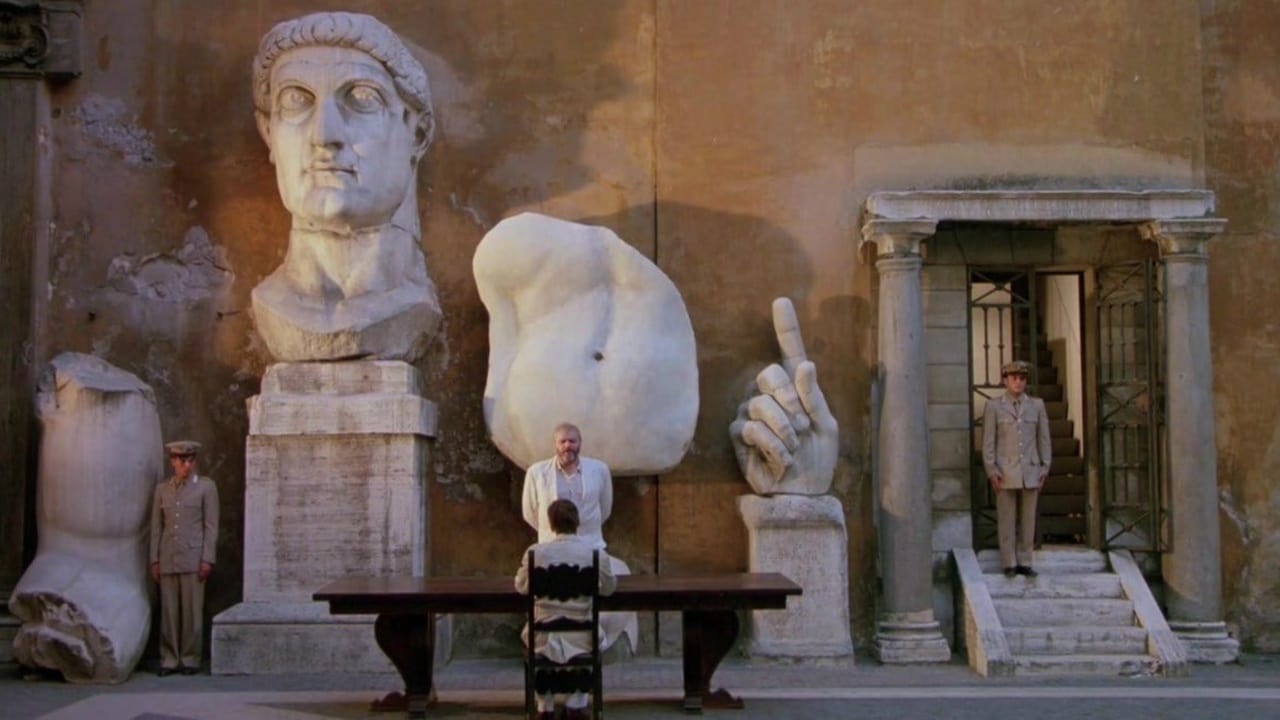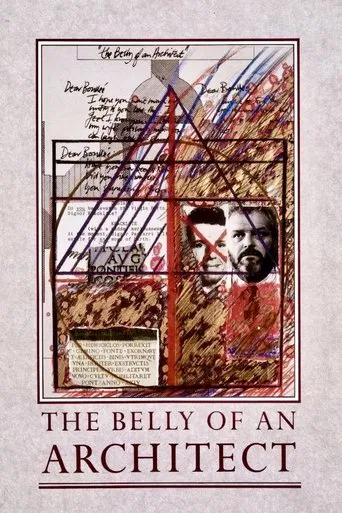

Being a student of structural design with a burgeoning paunch, I was keen to view the contents of said title. I was more than a little dismayed by the distinct lack of instructional fitness. Though initially compelled by the sight of the protagonist's mid section, the massive divergence from an physical improvement within the plot left me wanting. I did gain an insight into the transformation of artistic endeavor into obsession and finally paranoia but quite frankly my dear, I don't give a damn. I can only hope that Russell Simmonds did not suffer the same fate as yours truly. Having said this, my expectations were perhaps slightly askew. Peter Greenaway may not hold the same principals as this tragic hero.
... View MorePerhaps it is a mid-life crisis and a fear of death that simultaneously hits Chicago architect Stourley Kracklite (Brian Dennehy). He has traveled to Rome to present an elaborate tribute to the French architect Louis Boullee. Kracklite is fifty-four years old, uncertain that he has fulfilled the promise of his youth. He is married to a woman (Chloe Webb) young enough to be his daughter. So when he begins to develop stomach pains (perhaps due to a growing stomach tumor) while working in Rome and gets no satisfaction from doctors, he begins to believe his wife is poisoning him. Furthermore it appears that she is having an affair with an Italian architect named Caspasian (Lambert Wilson) who also desires to take over Kracklite's Boullee project. I think a lot of men in their fifties can identify with these sorts of threats to their well-being and perhaps be unable to tell the real from the unreal.So the human belly is a big deal in this film. At one point Kracklite prints out scores of photocopies of the belly of a Roman statue as if in scrutinizing mass copies of a flat belly he might somehow explain why he is in pain. Or perhaps the flat belly symbolizes his lost youth and the insecure feeling he has about the affection and faithfulness of Louisa, his young wife. Maybe it is even the case that the belly is a euphemistic symbol of something else that is no longer as vital as it once was. When men in their fifties worry about such things they also worry about their ability not just to cut the mustard but the quality of their work. In short, they worry about being superseded. One cannot help but feel in this case that Kracklite's growing paranoia is in part responsible for his declining power. Fear of something may give it strength.As for the way cinematic auteur Peter Greenaway directs this film, I think his intent is to let the film reflect the subject matter in the sense that both are of artistic intent rather than the movie being a commercial enterprise. (That is perhaps an understatement.) He shows the beauty of the architectural ruins of Rome. He thinks in terms of tableaux in wide shots. He picks a backdrop and sets the camera at some distance from the backdrop: Italian ruins, a spacious lobby, expansive steps in front of an impressive building. And then he plays the scene. Unlike most modern directors he mostly eschews close-ups. I'd rather he didn't. The effect is like being in a theater watching a play. There is a certain appropriateness I suppose about this technique since it creates in the viewer a feeling of spying, which is exactly what Kracklite finds himself doing in one scene, looking through a keyhole to see what his wife and Capasian are doing; and Greenaway has us see too, at the same distance.In another sense, there is a studied feel to this movie that suggests something a bit cold like marble which again is appropriate. Yet Brian Dennehy, in an intense, engaging performance, makes us feel for him and his predicament. We understand that he is realizing his mortality and we appreciate that his reaction is understandably confused and frightened. As for his wife, she seems distant not only because of the camera work but perhaps because she is psychologically estranged from her husband and from what he is going through.(Note: Over 500 of my movie reviews are now available in my book "Cut to the Chaise Lounge or I Can't Believe I Swallowed the Remote!" Get it at Amazon!)
... View MoreWelcome to Greenaway cinema. Having seen only his 'hit' The Cook the Thief His Wife & Her Lover(1989) and this, I cannot say much for the sum of his films. I will simply try to find and watch more film of his. His comments and quotes here in IMDb are impressive as well. On to the film: Shot in Rome, it will thrill people with interest on architecture both visually, but thematically as well, well at least at some points. The musical score is stunning. It suits the theme and climax that Greenaway masterfully builds. As with The Cook the Thief His Wife & Her Lover, it is not various separate songs. All the soundtrack songs together form a thriumph of visual and audio art, suggesting my point about the importance of film soundtracks for an effective impact on viewer. This is a sad story, but it features some light points where joy and lust for life is celebrated - at least for my eyes and ears.Those who criticise Greenaway for attempting only to shock the viewers have simply lost the point. Anyway. The Belly of an architect is no violent film, so it is highly recommended to those interested in films, maybe a bit 'arty', but with heart .
... View MoreBrian, except for the belly part, seemed to have exactly the opposite type of personality and physiognomy to play the central character. He had a big project to complete (beautiful architecture photography, by the way). His marriage and body are falling apart and he barely cracks a wrinkle.This may have been part of Greenaway's strategy of casting characters against obvious type (or maybe Brian was the largest major actor available). But this time it comes off as neither comedy or tragedy.Don't let this lapse by Greenaway turn you off to his other weirdness.
... View More